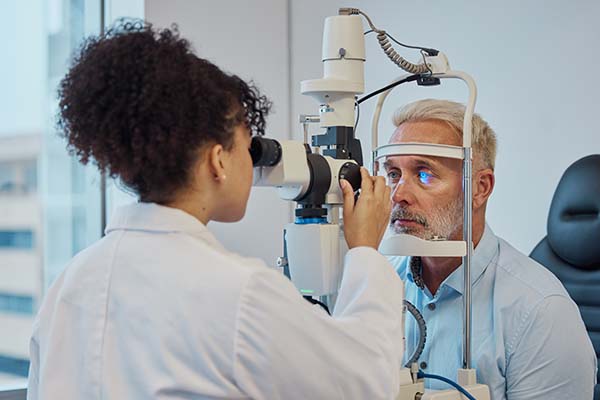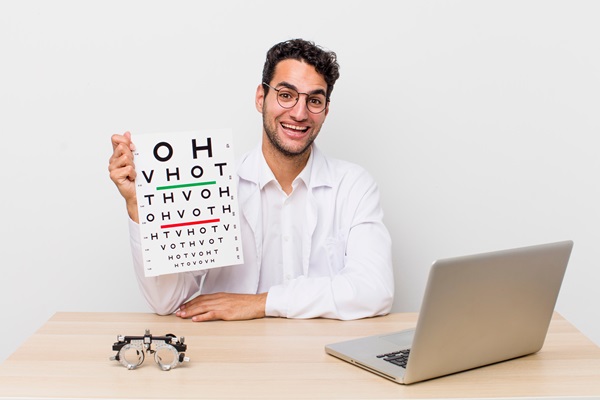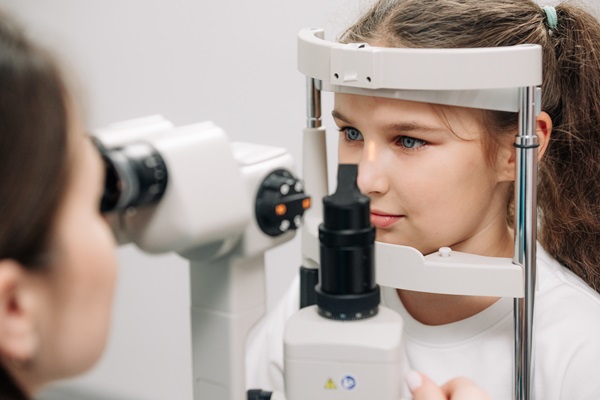What Does an Optometrist Look For During an Eye Exam?

An eye exam consists of several tests that allow the optometrist to determine the eyes' overall health. This exam can help to update prescriptions and catch any early warning signs of vision issues. Learning what the optometrist is looking for can help you understand the importance of maintaining an eye exam schedule and the frequency at which you must visit the optometrist.
What an optometrist tests for during an eye exam
Visual acuity
Visual acuity measures a patient's ability to see and identify objects clearly. It is often the most common test patients think of when they schedule an eye exam. The test involves the optometrist using an eye chart to determine how well the patient can see at varying distances. They will be asked to identify different letters and numbers from a chart placed at a distance. This portion of the eye exam aims to identify refractive errors like myopia (nearsightedness), hyperopia (farsightedness), or astigmatism– all requiring corrective lenses or laser eye treatment.
Refraction stability
In certain cases, the optometrist may check the stability of a patient's refraction over time. This is particularly relevant for children's still-developing eyes or those of a mature age with an underlying medical condition. Measuring the eye's refraction over multiple visits can help the optometrist determine if any changes occur and monitor the progress of the patient's vision.
Visual field
The visual field test occurs during every eye exam, regardless of age. It helps detect abnormalities or vision loss that may result from eye diseases, such as glaucoma or retinal problems. The optometrist may use various approaches, like having the patient focus on a central point in the room while small objects or lights are placed in their peripheral vision. The optometrist will move the object or light closer or farther from the front of their eyes until they can indicate when they see them.
Eye coordination
Testing how well the eyes work together and their muscle control is another common test many patients think of when scheduling an eye exam. This portion of the exam includes the cover test, involving the patient covering one eye at a time and using a tool called a prism to assess each eye's alignment and movement. This test can help detect conditions such as strabismus or amblyopia (lazy eye).
Intraocular pressure
When testing for eye diseases or the risk of development, the optometrist will check the pressure within the eye, formally known as intraocular pressure. Painless tonometry is a common test the optometrist will use to measure eye pressure. This test may involve gently touching the eye's surface or using a puff of air directed onto the eye to measure the pressure. These methods help determine if the eye pressure is at a normal level or if the patient needs further testing due to the development of underlying diseases.
External and internal health
Of course, the whole point of an eye exam is to check its overall health, not just certain aspects. The optometrist will examine the external structures of the eye, including the eyelids, lashes, and conjunctiva, to detect abnormalities, such as inflammation or infections. With the aid of various instruments, the optometrist will examine the eye's internal structure, including its retina, optic nerve, and blood vessels. This evaluation helps identify any signs of underlying diseases such as diabetic retinopathy, macular degeneration, or retinal detachment.
Frequency of eye exams
The American Academy of Ophthalmology recommends children undergo their first eye exam by their first birthday. Children between the ages of six and 17 should have one annually as their bodies are still developing. Adults between the ages of 20 to 39 years old should undergo a comprehensive eye exam every two to three years if they are in good health. Those aged 40 to 54 should schedule an exam every two years, and those older than that should visit annually.
The frequency of eye exams can vary depending on each patient's medical history, familial history of eye diseases, and existing vision problems. If a patient has an underlying condition such as diabetes, high blood pressure, macular degeneration, or cataracts, they will likely attend biannual appointments or more. Furthermore, if a patient wears glasses or contact lenses, the optometrist may schedule them for annual appointments to ensure their prescription stays current.
Check-in on your eye health
Eye exams are important for patients of all ages, as they check for more than whether or not you need glasses. Regular exams can help detect issues before they begin and protect the integrity of your eye health. Contact our office today if you are ready to schedule your next eye exam.
Request an appointment here: https://www.texasoptical.net or call Texas Optical at (214) 771-7333 for an appointment in our Dallas office.
Check out what others are saying about our services on Yelp: Read our Yelp reviews.
Recent Posts
The eyes are lamps for the brain, so receiving regular vision tests is a good idea. Depending on the general health of your eyes and the rest of your body, you may need one of these comprehensive assessments once a year or every two years. They allow the optometrist to ensure each eye's internal and…
Proper eye care is essential, as the eyes are windows for the rest of the body. However, people's needs can change as they age or go through different stages of life. Therefore, the value of regular vision care check-ups cannot be overstated. Whether for a child, adult, or senior, these comprehensive check-ups should be part…
The whites of the eyes can turn red for many reasons, some of which resolve independently without any treatment. However, red eye treatment is recommended when symptoms last more than two days. If you are experiencing red eye, an optometrist will work to diagnose the cause and relieve the symptoms effectively. They can also provide…
Getting the right prescription for your eyes is essential for clear vision and overall eye health. An optometrist uses a detailed and systematic process to ensure that your prescription is accurate and tailored to your specific needs. Here is an overview of how an optometrist determines the right prescription for you.In many cases, prescription glasses…


